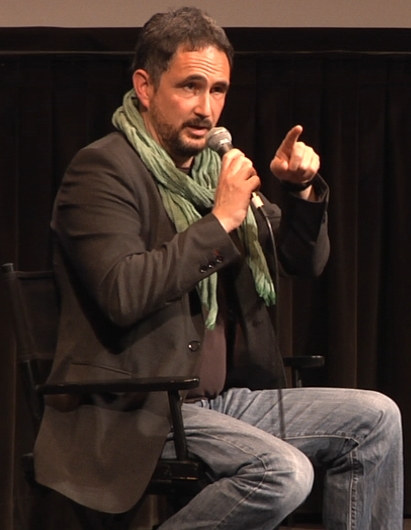 Who: Clemente Bicocchi is an Italy-based documentary filmmaker. His latest work, Black Africa White Marble examines the continuing legacy of Italian-born explorer Pietro Savorgnan di Brazza in the Republic of Congo, and screened at the 19th New York African Film Festival. Brazza spent the 1880’s exploring the rainforests of the Congo Basin for France with a small unarmed group. Meanwhile, English rival Henry Stanley, in the service of Belgian King Leopold II, advanced with an armed retinue. More than a century later, Congo’s president Sassou Nguesso moved to transfer Brazza from his grave in the Algerian capital of Algiers to a $9 million-dollar mausoleum in the impoverished Congolese capital of Brazzaville. But writer and Brazza descendent, Idanna Pucci raised alarm over the agenda behind the reburial plan. Bicocchi’s film explores all this in the context of Central Africa’s colonial past, and politically-turbulent present — using an innovative mixture of animation, puppetry and original documentary footage. Pucci also sued Nguesso in a French court, and threatened to remove Brazza’s remains, so as to force the government into abiding by an agreement with the family. Among other things, it stipulates the building of a paved road to Mbe, home to the current King Makoko — the spiritual leader of the country’s Batéké people, and descendent of the King who sheltered Brazza. Both Bicocchi and Pucci spoke to a packed audience following the NYAFF screening of the film, and Camera In The Sun then sat down with Bicocchi to discuss all things Pietro Savorgnan di Brazza, as well as his harrowing experience in Congo while filming.
Who: Clemente Bicocchi is an Italy-based documentary filmmaker. His latest work, Black Africa White Marble examines the continuing legacy of Italian-born explorer Pietro Savorgnan di Brazza in the Republic of Congo, and screened at the 19th New York African Film Festival. Brazza spent the 1880’s exploring the rainforests of the Congo Basin for France with a small unarmed group. Meanwhile, English rival Henry Stanley, in the service of Belgian King Leopold II, advanced with an armed retinue. More than a century later, Congo’s president Sassou Nguesso moved to transfer Brazza from his grave in the Algerian capital of Algiers to a $9 million-dollar mausoleum in the impoverished Congolese capital of Brazzaville. But writer and Brazza descendent, Idanna Pucci raised alarm over the agenda behind the reburial plan. Bicocchi’s film explores all this in the context of Central Africa’s colonial past, and politically-turbulent present — using an innovative mixture of animation, puppetry and original documentary footage. Pucci also sued Nguesso in a French court, and threatened to remove Brazza’s remains, so as to force the government into abiding by an agreement with the family. Among other things, it stipulates the building of a paved road to Mbe, home to the current King Makoko — the spiritual leader of the country’s Batéké people, and descendent of the King who sheltered Brazza. Both Bicocchi and Pucci spoke to a packed audience following the NYAFF screening of the film, and Camera In The Sun then sat down with Bicocchi to discuss all things Pietro Savorgnan di Brazza, as well as his harrowing experience in Congo while filming.
What were the challenges of filming in Congo?
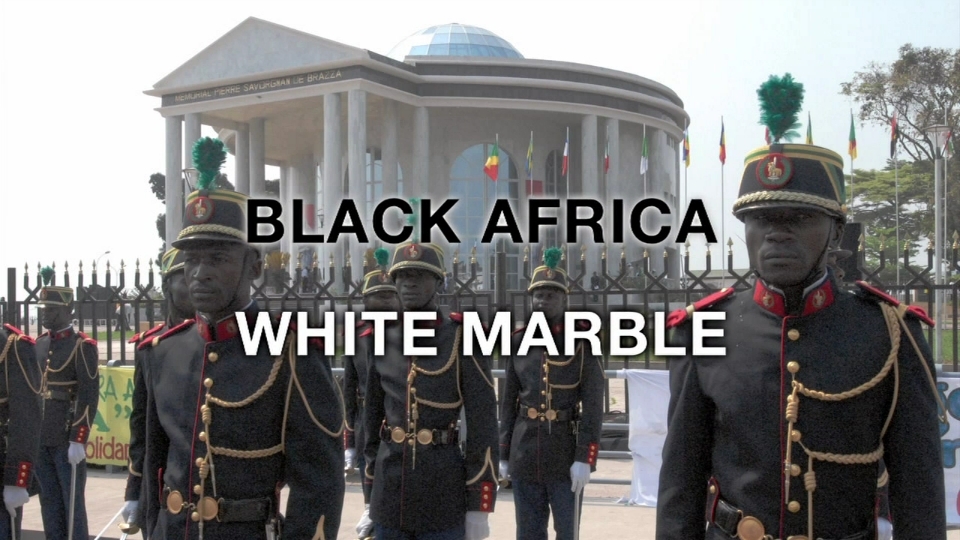 I wanted to go there and shoot, because I wanted to have this feeling of modern Congo. I wanted to have these links between past and present, and these echoes of the past in the present. So I said, “I want to go there.” And there weren’t professional producers. I mean, we’re a strange crew who fell in love with this story, and then decided to do it. And so [the film’s backers] said, “No, we have to find a way to get you in.” So they found that the ambassador of Italy was actually a friend of Idanna. So they manged to have him host us, and fake that I was his nephew, and that I was going there to visit the Congo. I was going there as a tourist with my camera. Because if I said, “I’m a professional, and I need all the papers,” there would be no way. And if they found out I was coming via Idanna, there would be no way. So I got my visa at the embassy of Congo, and everybody was looking at me like, “Who is this guy? The nephew of the ambassador is coming to visit Congo? Nobody is coming to
I wanted to go there and shoot, because I wanted to have this feeling of modern Congo. I wanted to have these links between past and present, and these echoes of the past in the present. So I said, “I want to go there.” And there weren’t professional producers. I mean, we’re a strange crew who fell in love with this story, and then decided to do it. And so [the film’s backers] said, “No, we have to find a way to get you in.” So they found that the ambassador of Italy was actually a friend of Idanna. So they manged to have him host us, and fake that I was his nephew, and that I was going there to visit the Congo. I was going there as a tourist with my camera. Because if I said, “I’m a professional, and I need all the papers,” there would be no way. And if they found out I was coming via Idanna, there would be no way. So I got my visa at the embassy of Congo, and everybody was looking at me like, “Who is this guy? The nephew of the ambassador is coming to visit Congo? Nobody is coming to 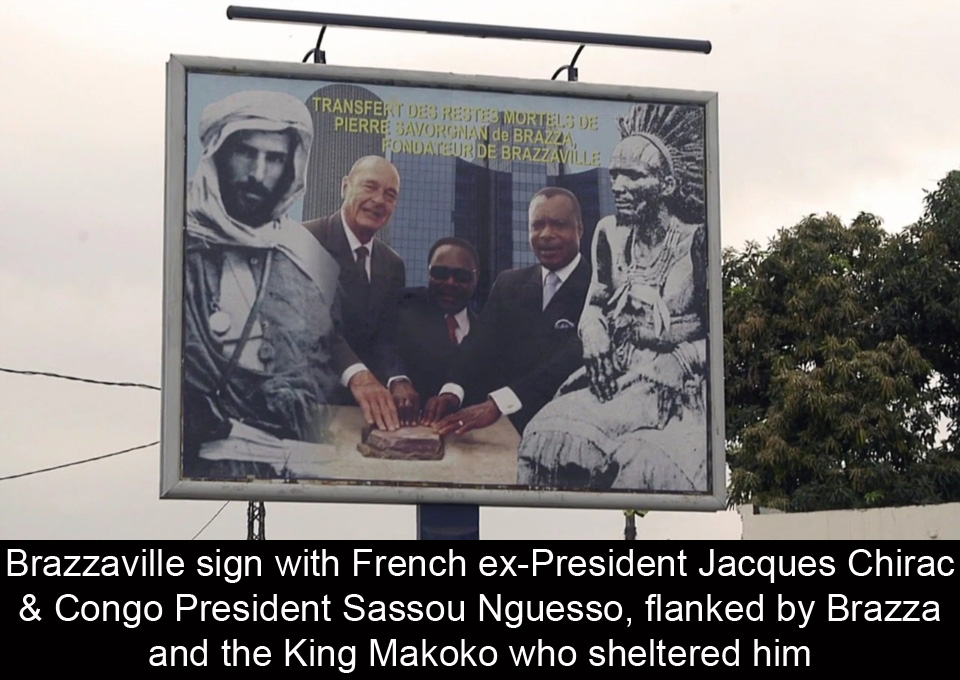 visit Congo.” Then I got there, and at the beginning I had this local contact at a spice store. He was saying, “Oh yes, I can do this. I’m a professional.” He was a nice guy, but he was always saying, “Yeah, yeah. No problem,” and he was full of problems, and didn’t arrange anything. So, we first shot in Brazzaville. And every time was hard, because the police were stopping us. Sometimes you can pay them a little or give them a beer. But after a while, the thing got to a higher level. They said, “Look, there is a White guy with a camera shooting around.” So policemen were getting tougher, and I had this idea that we had to get away from the city. “That’s enough. We can’t get more shots here, so let’s go to meet the Makoko.” But I was told before, “It’s really tough to go there. Don’t go there.” But I said, “What am I here for? Let’s do it. Let’s go get Makoko.” So it took like three days for us to find a car. Because as Idanna says in the film, it’s hard to find a car. In the end, we found a car that was without seats. They have these signs on top that say, “God will save us” or “God will help us.” And so you see “God will help us,” and then you see inside, and there are no seats and no brakes.
visit Congo.” Then I got there, and at the beginning I had this local contact at a spice store. He was saying, “Oh yes, I can do this. I’m a professional.” He was a nice guy, but he was always saying, “Yeah, yeah. No problem,” and he was full of problems, and didn’t arrange anything. So, we first shot in Brazzaville. And every time was hard, because the police were stopping us. Sometimes you can pay them a little or give them a beer. But after a while, the thing got to a higher level. They said, “Look, there is a White guy with a camera shooting around.” So policemen were getting tougher, and I had this idea that we had to get away from the city. “That’s enough. We can’t get more shots here, so let’s go to meet the Makoko.” But I was told before, “It’s really tough to go there. Don’t go there.” But I said, “What am I here for? Let’s do it. Let’s go get Makoko.” So it took like three days for us to find a car. Because as Idanna says in the film, it’s hard to find a car. In the end, we found a car that was without seats. They have these signs on top that say, “God will save us” or “God will help us.” And so you see “God will help us,” and then you see inside, and there are no seats and no brakes. 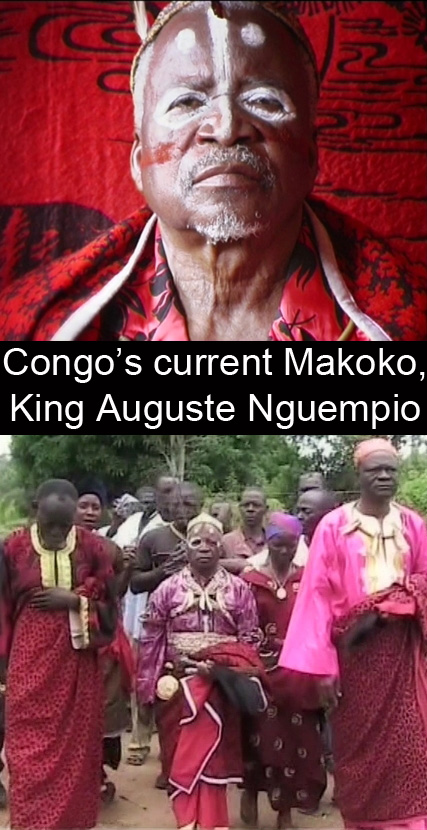 Then you say, “OK, we need the help of God.” And we got there in this car with this guy called Le Petit Arnot, who was like 7 feet tall, twice as big as me. But Le Petit Arnot was Batéké. So when they told him a guy is going to meet the Makoko because it’s important, this guy said, “OK, I’ll do it.” So we went with this guy, and it took us like six hours in the mud. Finally, I got there and I met the king. And after that, really in the bush, some officers stopped me. They came asking for papers, and of course my contact there didn’t have anything. He had a piece of paper with handwriting on it. So they took us to the office there. But when I say office, it was really in the middle of the forest, so it was a hut made of mud. So we went there, and they said, “OK, you are breaking the law.” And in the beginning, I was a bit easygoing. I said, “There’s no law. I can film. I mean, Makoko is a private person. I can film him.” And the guy just looked straight into my eyes and said, “We are not in Europe.” And at that time, I felt like, “OK, just calm down.” And then they took me to this so-called prison for four days, and kept making me answer tough questions. They asked me, “When did you come?” And I said, “OK, I told you a hundred times, on Monday.” They said, “No, we want to know the hour and flight.” I said, “OK, I’m not going through this. I want a lawyer.” And when I said I want a lawyer, they started laughing really hard. And then they suddenly stopped, looked straight into my eyes really serious, and said again, “We are not in Europe.” And it happened that before this, I felt there was something wrong, so I backed up some images on the hard drive I had. I gave them to a kid and said, “Bring this to the Makoko. He will know what to do.”
Then you say, “OK, we need the help of God.” And we got there in this car with this guy called Le Petit Arnot, who was like 7 feet tall, twice as big as me. But Le Petit Arnot was Batéké. So when they told him a guy is going to meet the Makoko because it’s important, this guy said, “OK, I’ll do it.” So we went with this guy, and it took us like six hours in the mud. Finally, I got there and I met the king. And after that, really in the bush, some officers stopped me. They came asking for papers, and of course my contact there didn’t have anything. He had a piece of paper with handwriting on it. So they took us to the office there. But when I say office, it was really in the middle of the forest, so it was a hut made of mud. So we went there, and they said, “OK, you are breaking the law.” And in the beginning, I was a bit easygoing. I said, “There’s no law. I can film. I mean, Makoko is a private person. I can film him.” And the guy just looked straight into my eyes and said, “We are not in Europe.” And at that time, I felt like, “OK, just calm down.” And then they took me to this so-called prison for four days, and kept making me answer tough questions. They asked me, “When did you come?” And I said, “OK, I told you a hundred times, on Monday.” They said, “No, we want to know the hour and flight.” I said, “OK, I’m not going through this. I want a lawyer.” And when I said I want a lawyer, they started laughing really hard. And then they suddenly stopped, looked straight into my eyes really serious, and said again, “We are not in Europe.” And it happened that before this, I felt there was something wrong, so I backed up some images on the hard drive I had. I gave them to a kid and said, “Bring this to the Makoko. He will know what to do.” 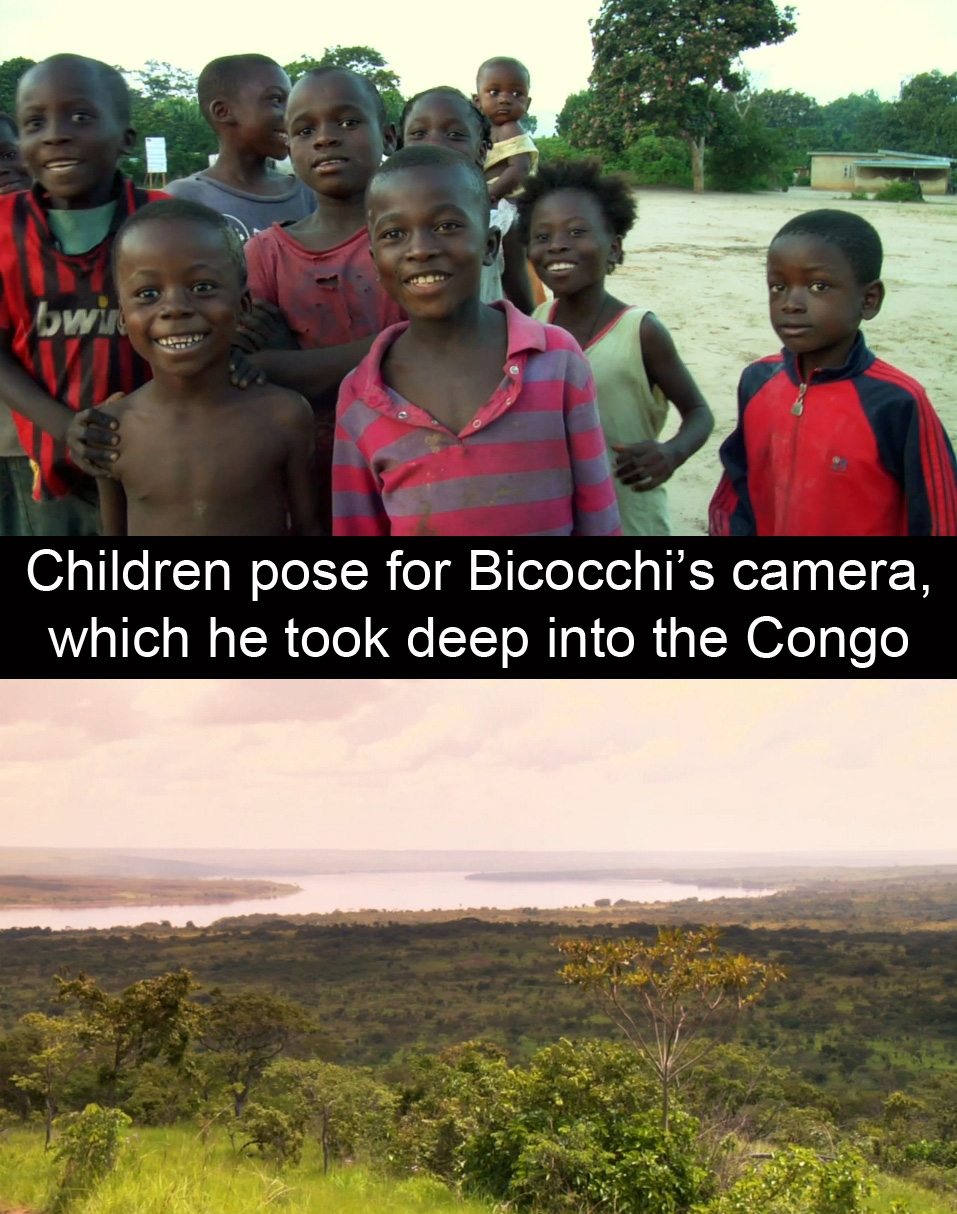 Because the people there were all kind. I mean, this was a place where they had never seen a white man. Never. So I was there, and everybody was looking at me. But they were all kind. They would offer me food. Because when they knew I was there for a reason, and filming the Makoko to bring this situation outside of Congo, they must have been thinking, “This guy is crazy.” And I was crazy. And then after I spent a few days there in prison, I was calling with someone’s mobile phone to the Embassy of Italy, “You know, I’m here.” So, there was this whole big spy story around me. But I was there in the middle of the forest. So finally, the ambassador managed to get me out. And they came, but I had to fly out the next day. The officer said, “You’re free.” And I was like, “Oh, thank you!” But I was mad, and said, “I’m gonna write a newspaper story! I’m like Ingrid Betancourt!” There were all these people around me laughing. So I said, “Why are you laughing!? I’m gonna write the newspaper!” And the officer said, “What? You’ve never been arrested. Nobody knows this. You’re a private man here. You can do what you want.” And so I said, “What about my camera?” Because they were always asking, “Where are the images of the king? Did you shoot the king?” I said, “No, I didn’t.” They’d say, “Yes you did.” And I’d say,
Because the people there were all kind. I mean, this was a place where they had never seen a white man. Never. So I was there, and everybody was looking at me. But they were all kind. They would offer me food. Because when they knew I was there for a reason, and filming the Makoko to bring this situation outside of Congo, they must have been thinking, “This guy is crazy.” And I was crazy. And then after I spent a few days there in prison, I was calling with someone’s mobile phone to the Embassy of Italy, “You know, I’m here.” So, there was this whole big spy story around me. But I was there in the middle of the forest. So finally, the ambassador managed to get me out. And they came, but I had to fly out the next day. The officer said, “You’re free.” And I was like, “Oh, thank you!” But I was mad, and said, “I’m gonna write a newspaper story! I’m like Ingrid Betancourt!” There were all these people around me laughing. So I said, “Why are you laughing!? I’m gonna write the newspaper!” And the officer said, “What? You’ve never been arrested. Nobody knows this. You’re a private man here. You can do what you want.” And so I said, “What about my camera?” Because they were always asking, “Where are the images of the king? Did you shoot the king?” I said, “No, I didn’t.” They’d say, “Yes you did.” And I’d say, 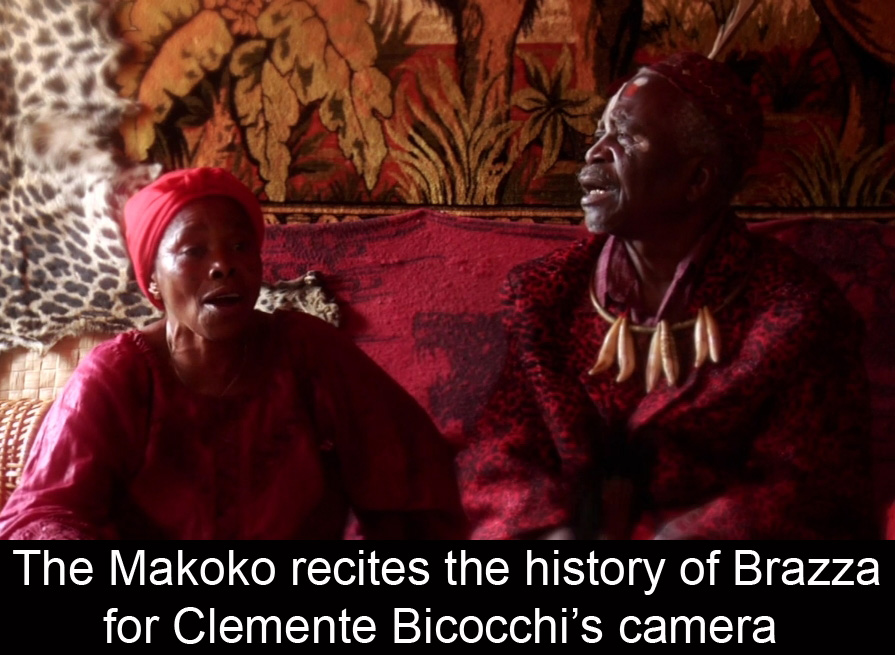 “No I didn’t.” And they’d say, “So, what were you doing yesterday?” And I’d say, “Well, we just met, but I didn’t shoot.” They’d say, “No, you were shooting.” And I’d say, “No, I didn’t shoot.” So I made a tape of just nature images to show them, like “You know, this is what I shot.” And so they’d say, “No, no, no. That’s not true. You’re hiding it.” And then they said, “You’re free.” But they said to get my camera I had to go to the headquarters of like the secret service. Because they are a former-Soviet supported country, they’ve got these methods. They changed everything, but the methods remain, so it’s like the Stazi. And so they said I’ve got to go the headquarters. And I said, “No way. I have a plane. I need to work in Europe. I’m not gonna stay here. I’m gonna leave.” And they said, “We’re gonna catch you at the airport.” So a guy came by on a bicycle, who’d been sent by the king, and said, “Mondele! Mondele!,” which means “white man.” He showed me the bike, which was full of mud. And I was riding this bike in the
“No I didn’t.” And they’d say, “So, what were you doing yesterday?” And I’d say, “Well, we just met, but I didn’t shoot.” They’d say, “No, you were shooting.” And I’d say, “No, I didn’t shoot.” So I made a tape of just nature images to show them, like “You know, this is what I shot.” And so they’d say, “No, no, no. That’s not true. You’re hiding it.” And then they said, “You’re free.” But they said to get my camera I had to go to the headquarters of like the secret service. Because they are a former-Soviet supported country, they’ve got these methods. They changed everything, but the methods remain, so it’s like the Stazi. And so they said I’ve got to go the headquarters. And I said, “No way. I have a plane. I need to work in Europe. I’m not gonna stay here. I’m gonna leave.” And they said, “We’re gonna catch you at the airport.” So a guy came by on a bicycle, who’d been sent by the king, and said, “Mondele! Mondele!,” which means “white man.” He showed me the bike, which was full of mud. And I was riding this bike in the 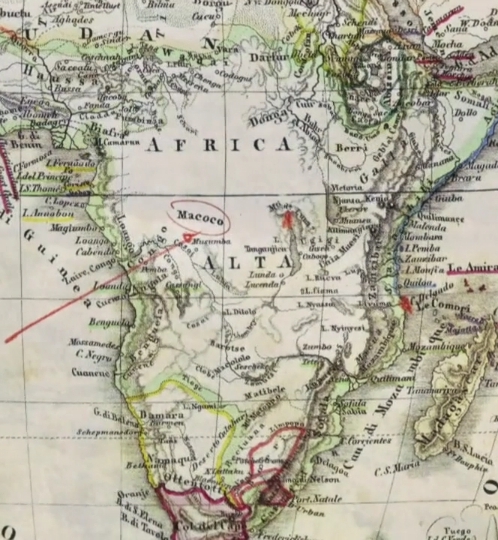 middle of the forest, trying to get away. And kids were coming out saying, Mondele! Mondele!” And then I got to the village of the king, and I was called “the mondele of the king.” So they were very kind, and they put me into a truck full of mandioca. It took me like six hours in the mud to get to Brazzaville. Because in the middle of the forest, there’s no cars. You can walk, but it would take you a long time. So I got to Brazzaville, and it was the morning of my flight. And then there was a taximan who was Batéké, and he said, “The mondele of the king! I know your story!” Because there, stories spread around quickly. So he was like, “Yeah, you did a good thing. Come, I’ll take you to the embassy.” I got into this cab, and when we got to the Italian embassy, the ambassador was mad at me. “Look what happens when I do a favor for Idonna. You shouldn’t have gone there. I had to speak with the Ministe
middle of the forest, trying to get away. And kids were coming out saying, Mondele! Mondele!” And then I got to the village of the king, and I was called “the mondele of the king.” So they were very kind, and they put me into a truck full of mandioca. It took me like six hours in the mud to get to Brazzaville. Because in the middle of the forest, there’s no cars. You can walk, but it would take you a long time. So I got to Brazzaville, and it was the morning of my flight. And then there was a taximan who was Batéké, and he said, “The mondele of the king! I know your story!” Because there, stories spread around quickly. So he was like, “Yeah, you did a good thing. Come, I’ll take you to the embassy.” I got into this cab, and when we got to the Italian embassy, the ambassador was mad at me. “Look what happens when I do a favor for Idonna. You shouldn’t have gone there. I had to speak with the Ministe
r to get you out.” So I said, “They told me, they’ll catch me at the airport.” And he said, “OK, we’ll do it like this. We put you in a car with the Italian flags, like the official ambassador car. We drive you there, and we’ll be there with you.” Because every embassy has a police guard. “So, you’re an Italian citizen. Whatever happens, we have someone who can 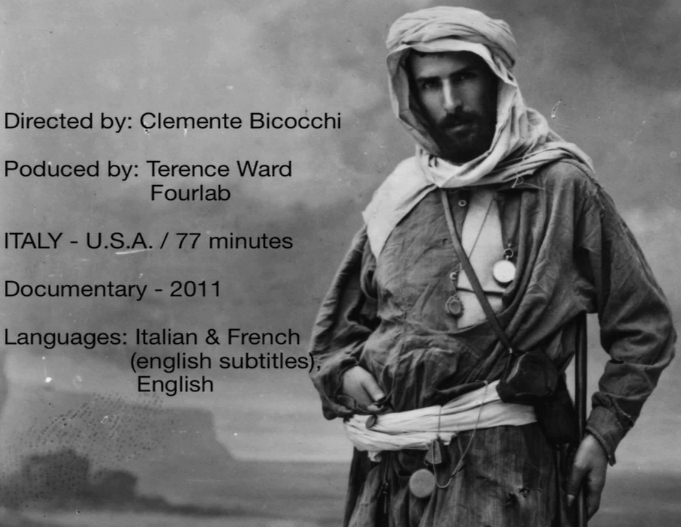 stand for your rights.” And so they got me to the plane, and on the way there I saw people waiting for me. But they got me to the plane, I flew away, and after two months I got my camera back. Because they were trying to get these images, but they didn’t know how to, because it was hard-drived. My family didn’t know anything. And so when they said, “Oh, so how was it?” And I said, “I got arrested.” And they went crazy, like, “You’re never gonna do anything like this anymore! Because what happened if they kill you!?” But I never felt in real danger. It was more like surrealistic. I’m gonna write a novel about it, because it’s also funny. I mean, this White kid in the middle of nowhere, suddenly he finds himself arrested for filming a king.
stand for your rights.” And so they got me to the plane, and on the way there I saw people waiting for me. But they got me to the plane, I flew away, and after two months I got my camera back. Because they were trying to get these images, but they didn’t know how to, because it was hard-drived. My family didn’t know anything. And so when they said, “Oh, so how was it?” And I said, “I got arrested.” And they went crazy, like, “You’re never gonna do anything like this anymore! Because what happened if they kill you!?” But I never felt in real danger. It was more like surrealistic. I’m gonna write a novel about it, because it’s also funny. I mean, this White kid in the middle of nowhere, suddenly he finds himself arrested for filming a king.
What is Brazza’s legacy among the Congolese you spoke with?
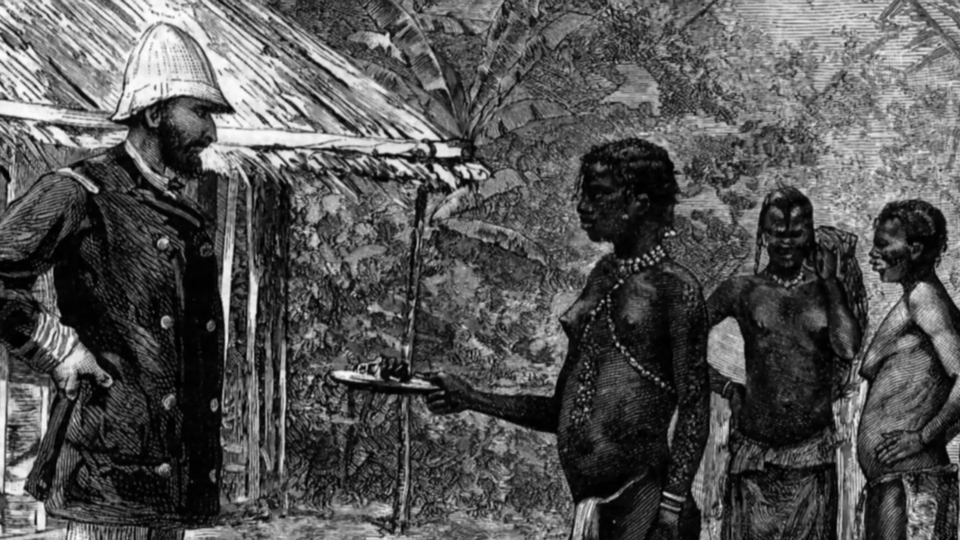 I mean, there are no books there. It’s passed by oral history from generation to generation to generation. And this whole legend gets a higher point in what this griot sings every time. And he sings the legend from the beginning of time until now. So it’s all a big story, and it’s all guided by the spirit of everything. So in time, Brazza has become part of this legend. And also, in the puppet theater, I took some of this. Because it was nice to have their point of view. And their point of view is, in their legend, he’s their White ancestor. For them, he’s part of their story, and they tell the story starting from a totally different point of view. It’s not just him as the European man going there, and finding that everything is different, it’s hard, and there’s fever, and then the will to go further. But also, from their point of view, it’s that “Someone very different is coming! He’s White! But I don’t think he’s White, because he acts like a Black man. Maybe they took out his last layer of skin.” So the Great White Chief is part of their legend, and I wanted this to be in the film, because it’s also their story.
I mean, there are no books there. It’s passed by oral history from generation to generation to generation. And this whole legend gets a higher point in what this griot sings every time. And he sings the legend from the beginning of time until now. So it’s all a big story, and it’s all guided by the spirit of everything. So in time, Brazza has become part of this legend. And also, in the puppet theater, I took some of this. Because it was nice to have their point of view. And their point of view is, in their legend, he’s their White ancestor. For them, he’s part of their story, and they tell the story starting from a totally different point of view. It’s not just him as the European man going there, and finding that everything is different, it’s hard, and there’s fever, and then the will to go further. But also, from their point of view, it’s that “Someone very different is coming! He’s White! But I don’t think he’s White, because he acts like a Black man. Maybe they took out his last layer of skin.” So the Great White Chief is part of their legend, and I wanted this to be in the film, because it’s also their story.
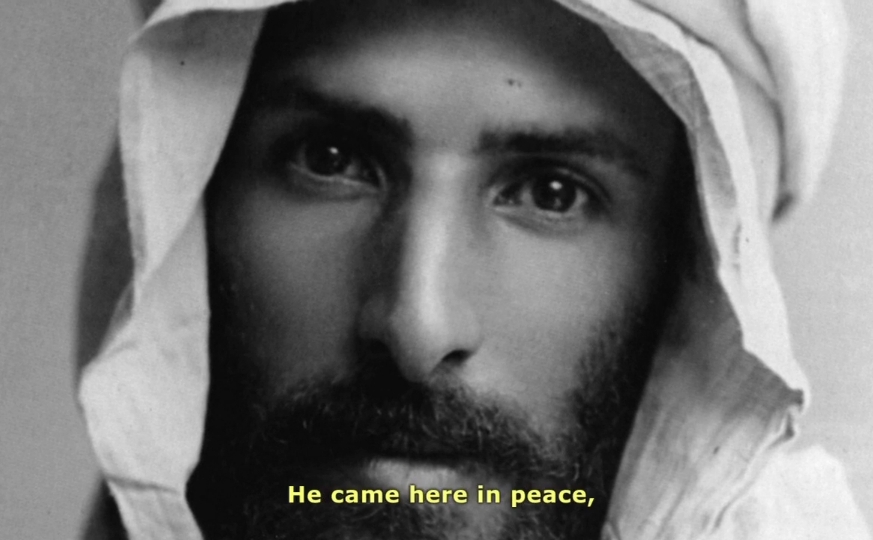 The thing is, his story is totally unknown. And somehow it’s known in France, but in the very official way: “An explorer who went to Congo. He had these adventures.” But he’s not remembered as someone who showed a ray of light in the shadow of colonization. He had a different point of view. And to tell this story, there is something bigger behind this. There’s an ethical issue — that by showing this story, you show that it could have been different. And if Brazza’s path had been taken, the relationship between Europe and Africa would have been different. Of course, these are small stories in this big shadow of colonization, and the relation between us and them. But by picking these little stories that show a different way of dealing with this, and show someone who was quite clear that these companies were going there just to take rubber, and that was not the right way — it’s something that goes beyond just making a film.
The thing is, his story is totally unknown. And somehow it’s known in France, but in the very official way: “An explorer who went to Congo. He had these adventures.” But he’s not remembered as someone who showed a ray of light in the shadow of colonization. He had a different point of view. And to tell this story, there is something bigger behind this. There’s an ethical issue — that by showing this story, you show that it could have been different. And if Brazza’s path had been taken, the relationship between Europe and Africa would have been different. Of course, these are small stories in this big shadow of colonization, and the relation between us and them. But by picking these little stories that show a different way of dealing with this, and show someone who was quite clear that these companies were going there just to take rubber, and that was not the right way — it’s something that goes beyond just making a film.
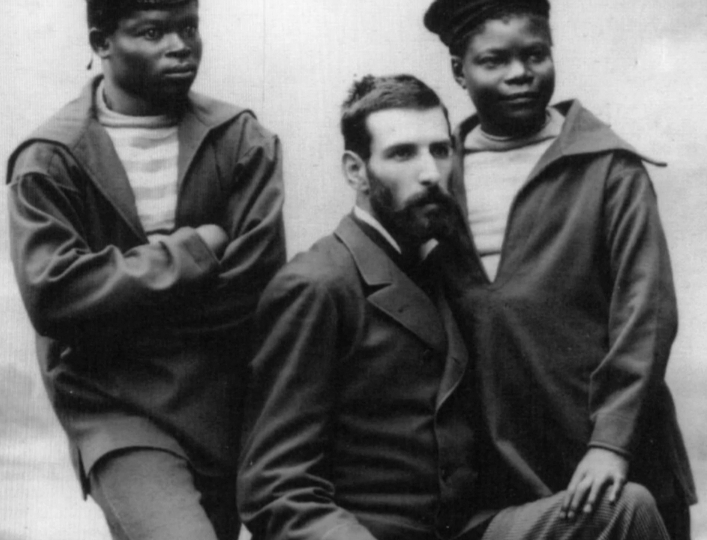 Like in the photos of that time, and you have it in the film, Brazza is portrayed with these black guys. And they’re well dressed like him, because he wanted them to be that way. Because “If I’m well-dressed, they should be well-dressed?” And they put their hand on his leg, like they’re friends. It’s a family portrait. And he put the name of people. So, it’s not just a “Black guy” there. He has a name. And if you see Stanley’s photos, it’s him dressed as the colonial with the pith helmet with the gun, with the black boy behind dressed like a savage. It’s like making fun of them somehow. So he’s almost naked with just a loin cloth and standing behind him, looking scared, and Stanley is there in front. So just by these two pictures, you see the difference. Images tell more than words. You see the difference in the approach they had. And I found this difference crucial in the story of Brazza. Also, from their point of view, Brazza and Stanley were
Like in the photos of that time, and you have it in the film, Brazza is portrayed with these black guys. And they’re well dressed like him, because he wanted them to be that way. Because “If I’m well-dressed, they should be well-dressed?” And they put their hand on his leg, like they’re friends. It’s a family portrait. And he put the name of people. So, it’s not just a “Black guy” there. He has a name. And if you see Stanley’s photos, it’s him dressed as the colonial with the pith helmet with the gun, with the black boy behind dressed like a savage. It’s like making fun of them somehow. So he’s almost naked with just a loin cloth and standing behind him, looking scared, and Stanley is there in front. So just by these two pictures, you see the difference. Images tell more than words. You see the difference in the approach they had. And I found this difference crucial in the story of Brazza. Also, from their point of view, Brazza and Stanley were 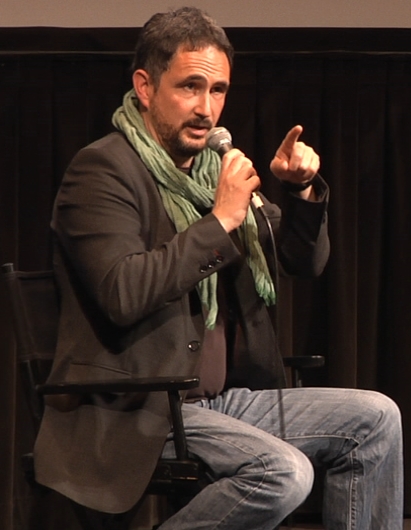 going at the same time on opposite sides of the River Congo. The Makoko knew the other one was called “Bula Matari,” which means “the stone breaker.” Because he had big cannons, and just did wild things going forward no matter what, with 100 people all armed to the teeth. Brazza was four people without arms, dealing with everybody. Also, there’s the dream of the Makoko seeing these two White men coming. And in his dream, they said that “You have to choose one.” And he said, “I will choose the one who comes in peace.” The ancient Makoko was a visionary man, because he knew he would have to face these White guys sooner or later. So he chose Brazza, because he thought that with him he could build a relation. He had to face that they will come somehow, and he would have to deal with them. So, he was a man of vision.
going at the same time on opposite sides of the River Congo. The Makoko knew the other one was called “Bula Matari,” which means “the stone breaker.” Because he had big cannons, and just did wild things going forward no matter what, with 100 people all armed to the teeth. Brazza was four people without arms, dealing with everybody. Also, there’s the dream of the Makoko seeing these two White men coming. And in his dream, they said that “You have to choose one.” And he said, “I will choose the one who comes in peace.” The ancient Makoko was a visionary man, because he knew he would have to face these White guys sooner or later. So he chose Brazza, because he thought that with him he could build a relation. He had to face that they will come somehow, and he would have to deal with them. So, he was a man of vision.
Why didn’t you show more of the French role in the story of Brazza, and his mausoleum?
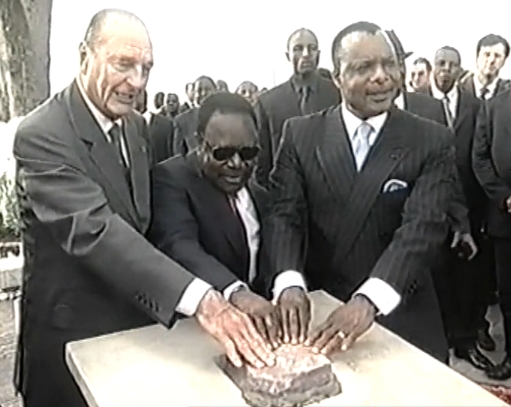 There were a few things, and I think we’re going into troubles with this film. I mean, they’re powerful and have a lot of money. So they will find a way to maybe stop this film. And if not stop it, then try to take legal action. So we have to be sure that we say things, without saying too much. People can understand, so you don’t have to just show everything. And in this case, it’s also safer. Because there’s nothing in this film that cannot be proved with documents, images and everything. I’m just telling you one story. If you have yours, then make your own film. And that’s what I would answer if a Congolese man from the government came and said, “Oh, this film is wrong.” I would say, “I can prove what I made.” I’m not telling you this is the truth, but I’m telling you this is my point of view. And this isn’t just with the Congolese. It might also be with the French, because the
There were a few things, and I think we’re going into troubles with this film. I mean, they’re powerful and have a lot of money. So they will find a way to maybe stop this film. And if not stop it, then try to take legal action. So we have to be sure that we say things, without saying too much. People can understand, so you don’t have to just show everything. And in this case, it’s also safer. Because there’s nothing in this film that cannot be proved with documents, images and everything. I’m just telling you one story. If you have yours, then make your own film. And that’s what I would answer if a Congolese man from the government came and said, “Oh, this film is wrong.” I would say, “I can prove what I made.” I’m not telling you this is the truth, but I’m telling you this is my point of view. And this isn’t just with the Congolese. It might also be with the French, because the 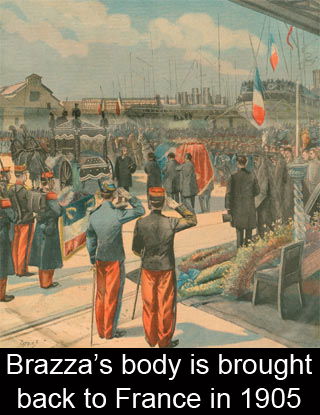 Brazza story is hidden. With his story, I cannot say for sure that they poisoned him. But his wife refused the honor to have him buried in the Panthéon, because she was mad at the French government, because she thought that they killed him, because he was going too deep into this anti-colonial system inquiry. The past story has a tragic part that has been covered up. And by showing that, France will not be happy. I mean, we’re showing some of their past that has remained unknown, and it’s not good. But by showing it, somehow you say, “Face it. Hiding things is never good.” And with this film, we’re just giving a point of view, a story. If you don’t agree, I accept it. Just do your own. Not telling the story at all, and just saying, “Oh, Brazza. Yeah, the great explorer who went to Congo, period.” No.
Brazza story is hidden. With his story, I cannot say for sure that they poisoned him. But his wife refused the honor to have him buried in the Panthéon, because she was mad at the French government, because she thought that they killed him, because he was going too deep into this anti-colonial system inquiry. The past story has a tragic part that has been covered up. And by showing that, France will not be happy. I mean, we’re showing some of their past that has remained unknown, and it’s not good. But by showing it, somehow you say, “Face it. Hiding things is never good.” And with this film, we’re just giving a point of view, a story. If you don’t agree, I accept it. Just do your own. Not telling the story at all, and just saying, “Oh, Brazza. Yeah, the great explorer who went to Congo, period.” No.
We also decided not to go deeper in the French direction, because it would shift the narrative. And when you tell a narrative in one hour and twenty-minute story, you have to choose what to say and what not say. Because this whole story would be a series of ten documentaries, and everyone has a lot to say. I mean, Idanna told me her story, but speaking fast. And from beginning to end, it 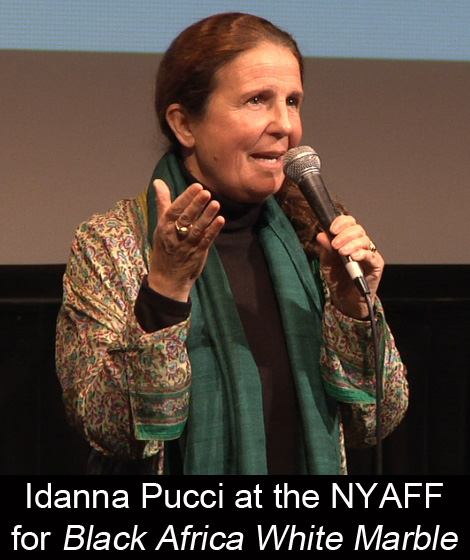 took her four hours just to say what happened. That’s without going philosophical. And for each moment of those four hours, I was thrilled. And with Brazza’s story, a lot of things were cut off. Because his story is long, it would also be a series of 10 films. So with all this, you have to reduce it to one hour and twenty minutes that make sense. Somehow you have to make choices. And every choice is like, “But this is so nice.” And then at some point, you have to say “OK. Even if it’s good, even if I would like to tell this story, if I want to focus on the main narrative, I have to take this out.” So this is why with this thing of France behind all this, which is another different story, it was a matter of the general structure. You cannot say everything. I mean, filmmaking is a matter of what you choose to say, and what you don’t say — what you show, and what you don’t show. So in the end, it was both things.
took her four hours just to say what happened. That’s without going philosophical. And for each moment of those four hours, I was thrilled. And with Brazza’s story, a lot of things were cut off. Because his story is long, it would also be a series of 10 films. So with all this, you have to reduce it to one hour and twenty minutes that make sense. Somehow you have to make choices. And every choice is like, “But this is so nice.” And then at some point, you have to say “OK. Even if it’s good, even if I would like to tell this story, if I want to focus on the main narrative, I have to take this out.” So this is why with this thing of France behind all this, which is another different story, it was a matter of the general structure. You cannot say everything. I mean, filmmaking is a matter of what you choose to say, and what you don’t say — what you show, and what you don’t show. So in the end, it was both things.
What was your previous film experience like prior to this project?
Before I studied film, I had a semester at NYU in 1996, because there was this exchange program. NYU kids went to Florence, and Florence kids went to NYU. And it wasn’t a balanced exchange. I don’t 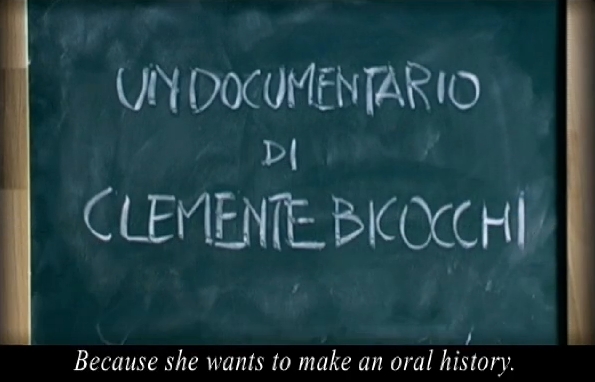 know how the experience was for them, but it was wonderful for us. I took film classes, I took a mime class, I took theater classes, everything. Then I studied documentary. At the beginning, I went to the National film school in Rome, and I made some experimental films. First, I was more like an editor. But then, I realized that you need patience to be an editor. I was always thinking, “I’m not the right guy to do this job.” So then I started to do very small and low, low budget experimental films. And then I did a documentary. I wouldn’t say it was a success, but it went well. The main thing was that Idanna saw this film, and she really loved it, so she called me. So at least I made a film that worked, and then I made Black Africa White Marble. The first film is also a personal story within a global history, because it’s about World War II in Italy. So there was all the nations there in this small village where my mother comes from. So I followed her back, and by remembering
know how the experience was for them, but it was wonderful for us. I took film classes, I took a mime class, I took theater classes, everything. Then I studied documentary. At the beginning, I went to the National film school in Rome, and I made some experimental films. First, I was more like an editor. But then, I realized that you need patience to be an editor. I was always thinking, “I’m not the right guy to do this job.” So then I started to do very small and low, low budget experimental films. And then I did a documentary. I wouldn’t say it was a success, but it went well. The main thing was that Idanna saw this film, and she really loved it, so she called me. So at least I made a film that worked, and then I made Black Africa White Marble. The first film is also a personal story within a global history, because it’s about World War II in Italy. So there was all the nations there in this small village where my mother comes from. So I followed her back, and by remembering 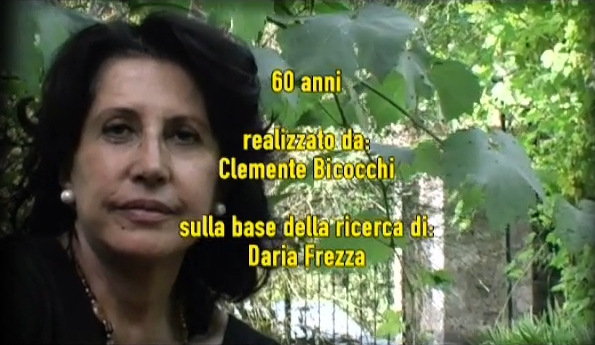 her personal experience, we find out more about the global experience. At the end, we end up seeing the absurdity of war, and what nonsense it is, and how all the things that look sure can change very fast. So it’s very personal, and it’s a different point of view in a story. And also at that time, I didn’t want to do the classic history documentary that tells you, “This is the story.” No. It’s more like the story is a narration, a point of view. You can always find things that don’t match or don’t fit. So you find little tiny spaces where it goes from A to B. And then you do the whole thing, and you come back to A. But by doing this story, your A is not the same A anymore. It’s another. So it’s trying with film to mirror the experience of knowledge, of life. I mean, that’s not simple. It’s not 1 + 1 +1 +1.
her personal experience, we find out more about the global experience. At the end, we end up seeing the absurdity of war, and what nonsense it is, and how all the things that look sure can change very fast. So it’s very personal, and it’s a different point of view in a story. And also at that time, I didn’t want to do the classic history documentary that tells you, “This is the story.” No. It’s more like the story is a narration, a point of view. You can always find things that don’t match or don’t fit. So you find little tiny spaces where it goes from A to B. And then you do the whole thing, and you come back to A. But by doing this story, your A is not the same A anymore. It’s another. So it’s trying with film to mirror the experience of knowledge, of life. I mean, that’s not simple. It’s not 1 + 1 +1 +1.
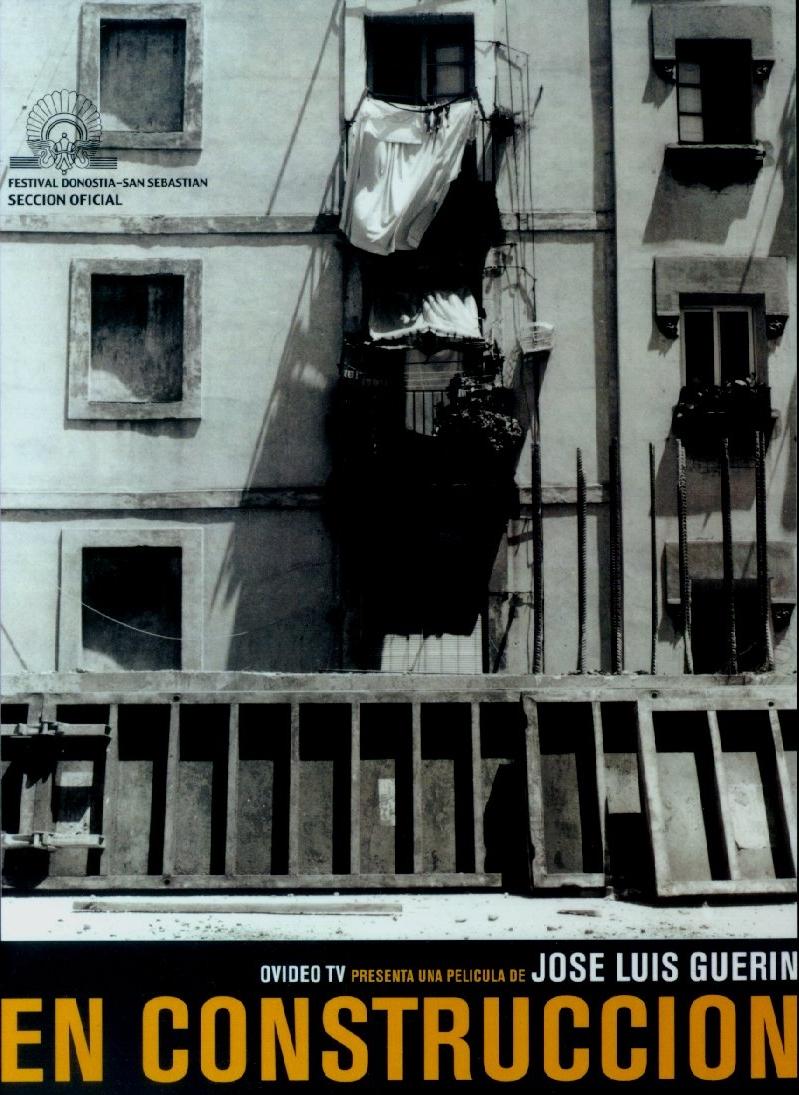 The thing I really think changed my way of thinking was in Barcelona when I did a masters program in documentary filmmaking. That was very good, and I had professors. But it wasn’t like a film school where you do things. It was more like you see films, you talk about films, and changing the way you think about film. The focus was, you don’t go and shoot. You think before you go. You write. If there’s gonna be improvisation, it’s gonna be just so much. You have it clear in your mind. You’re so well-staged, that then you can improvise. But without that work before, you cannot improvise. You know, it was one year of that. Then I worked with a Spanish director, José Luis Guerín, who made a beautiful film called En construcción. And working with him, we were a group of these masters kids following his process. By doing that, I learned a hundred times more than if I were to get the camera and shoot, and have all these normal film school classes. Those things, you learn it in a week. These other things, you don’t learn it. I mean, I had the chance to have this experience. Also, filmmaking is an experience. It’s how you put yourself into the world, and how you deal with this medium. And it’s not easy.
The thing I really think changed my way of thinking was in Barcelona when I did a masters program in documentary filmmaking. That was very good, and I had professors. But it wasn’t like a film school where you do things. It was more like you see films, you talk about films, and changing the way you think about film. The focus was, you don’t go and shoot. You think before you go. You write. If there’s gonna be improvisation, it’s gonna be just so much. You have it clear in your mind. You’re so well-staged, that then you can improvise. But without that work before, you cannot improvise. You know, it was one year of that. Then I worked with a Spanish director, José Luis Guerín, who made a beautiful film called En construcción. And working with him, we were a group of these masters kids following his process. By doing that, I learned a hundred times more than if I were to get the camera and shoot, and have all these normal film school classes. Those things, you learn it in a week. These other things, you don’t learn it. I mean, I had the chance to have this experience. Also, filmmaking is an experience. It’s how you put yourself into the world, and how you deal with this medium. And it’s not easy.